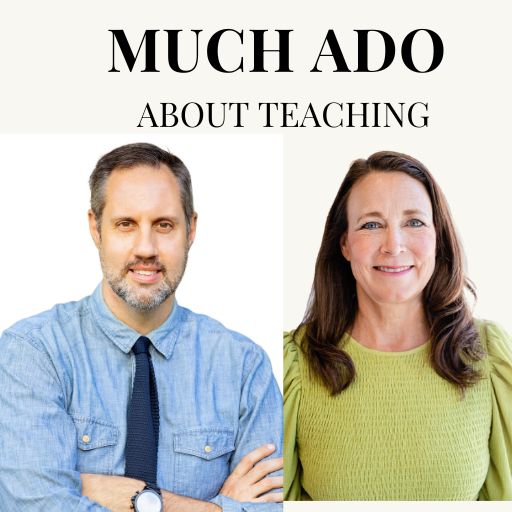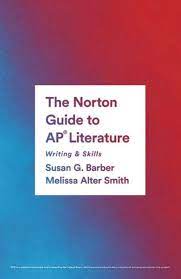My basketball season ended a week ago. Even though our record wasn’t that impressive, I am proud that we, as a team, made a concerted effort each day to enjoy basketball. The season spans four months and can be so taxing mentally and physically. If you don’t find ways to make it fun, it can be torture.
The same can be said of a school year.
Each year I do an NCAA-bracket style March Madness just as we are coming out of the dead of winter.
It has taken on many different forms over the years, and there are modifications you can do, but the version that I like best is Poetry March Madness.
POETRY MARCH MADNESS
In the NCAA college basketball 68 teams compete in a single-elimination, bracket-style challenge to determine the national champion.
In my class, we spend the month of March reading 32 poems, all of which compete in a single-elimination, bracket-style challenge to determine a class champion.
The month has two broad goals:
- to provide the means for my students to appreciate poetry, especially those that say they don’t like it
- to give students a framework to understand poetry
Before I get into the progression of how I set it up, what happens each day in class, and what the students do, here is an overview of some key elements in the unit.
- 32 poems are involved
- We vote in class each day on the brackets (sometimes 2-3 brackets early on)
- The unit takes about a month to complete
- students will build skills incrementally throughout the unit, first learning how to identify a poem’s subject/theme, then its tone, its poetic techniques, and finally how to write about poetry.
- students will develop their own internal rubric for poetic excellence
PREP WORK
The first thing I do is find 32 poems that my students have not read. You can use this list of 100 poems for inspiration. Also, at the end of the post, you can see my bracket for this year as well as all my resources and materials for this unit. This year’s list includes poems by Mary Oliver, Alberto Rios, Jericho Brown, Billy Collins, and more.
Once I have the 32 poems, I have the students make the brackets. BIG BRACKETS! I’m talking about four huge pieces of paper taped together BIG. The students measure the paper, do the math on the spacing, and mark all the lines.
Each class’s bracket go up on the back wall.
Here is what it looks like:


THE LEARNING OBJECTIVE FOR EACH ROUND
1st Round (32 poems, 16 brackets)— For the first-round bracket, we have a discussion that focuses on the subject/theme of each poem. I hand out my 50 Common Themes in Literature worksheet. We sit in a circle, each student provides their answer, and I record the tallies on each poem. Once we have the main subjects identified for each poem, we have a discussion that includes a summary of each poem, lines that we like, lines that gave us trouble, and at the end of the period, a vote on the superior poem.
There is a good pedagogical reason why I start with subject/theme. A few years ago, members of the AP Literature exam developed a PowerPoint slide with suggested areas of improvement for teachers and students. It provided advice culled from the millions of essays read over the past few years for each of the three essay questions. One of the most important pieces of advice that it provided for the poetry essay was that it was not enough to merely identify literary or poetic devices. Students should always connect those devices back to meaning.
This reinforced what I was seeing in my own classroom and in my years of experience as an AP Reader. Students could identify the simile or personification in a poem. They could explain the comparison or the human quality that was given. But all too often, they did not show how that simile or use of personification enhanced the meaning of the poem. They did not see how technique added to the complexity of the poem. Meaning and complexity were absent in their writing.
This is what separated upper-level essays from lower-level ones. Upper-level essays could explain the impact the device had on meaning.
As a result, I begin the first round with a discussion of subject/theme because I want my students to have that conceptual framework first. I want them to be able to identify the subject or theme of a poem, and then see how everything else is there in service of it.
The 16 brackets typically takes two weeks.
Once I model what we do with the poems in class, I am comfortable asking them to do the same for homework for the next bracket so that we can cover two brackets a day. This is how we get through 32 poems and 16 brackets in two weeks.
Here’s an example of a first-round poem with brief annotations and tally marks for the subjects the students identified.

2nd Round (16 poems, 8 brackets) — During the second round students see poems the second time. They already have an understanding of the poems, so we develop a more complex appreciation by examining tone. I want my students to understand the speaker’s attitude toward the subject and determine the effect it has on the poem.
On the multiple-choice section of the exam, my students are weak on tone because their vocabulary isn’t broad-ranging to consistently score well. Throughout the course of this week, we are looking at shifts in tone, we are identifying the right word (check out this post on teaching tone), and we are discussing the impact tone has on the overall effect of the poem.
I use a list of 35 tone words that I created years ago. Vocabulary.com also has a good list of AP tone words.
3rd Round (8 poems, 4 brackets) — A this point, the discussions and voting get progressively intense. Students have an attachment for certain poems. They are rooting for an underdog. They have a favorite that they want to go far.
During the third round, and with only eight poems remaining, we focus on poetic technique. Finally, they can do their scavenger hunt for similes, metaphors, images, paradoxes, ironies and other techniques used by the poet to enhance complexity and meaning.
This is where the work of the first two rounds will really pay off. When the students find those devices, I’m going to challenge them to analyze how those techniques influence the meaning. I’m going to push them to see the way in which they impact the tone.
In essence, I asking them to see the layers of complexity and determine how those parts accumulate to influence the whole of the poem.
4th round (4 poems, 2 brackets) — In the final four, I ask the students to write a well-developed essay for each bracket explaining why they believe one poem is superior. They must analyze the parts of the poem and explain how those parts influence the meaning. In addition, they must explain the personal significance of the poem, detailing why its thematic power is significant to them.
Final round (2 poems, 1 bracket) — Rather than write another essay, we have a whole class discussion, which really turns into a debate on the merits of the final two poems. Both are exceptional, but there can only be one winner.
When the discussion has reached and end, we do a secret ballot and I read the votes while a student puts the tally marks on the board. I’m trying to create as much suspense and anticipation as possible because many of the students have become attached to these poems over the course of the unit.
Alternatives — There are others ways to do March Madness in the classroom. Here are some ideas:
- If you are short on time, you can do a one-day review of 32 things that you have read throughout the year to find out what the students liked best
- history teachers have read my Edutopia March Madness post and were inspired to do a Dictator March Madness to determine to most ruthless dictator in history
- 32 works of art, music, etc.
- Presidential March Madness to determine who was the best president in U.S. history
- March Madness quotes in which you pull 32 quotes from the things that you have read to determine which was the most enduring and impactful
Get all of my Poetry March Madness resources
this includes:
— 50 common subjects in literature and poetry













3 comments
Ellensutherland
I did this during the pandemic. It saved me when we went remote without a clue as to how long etc. I love this
Deirdre Zongker
Do you provide hard copies of the poems to the students, or do they read them online? Thank you so much for this fabulous resource!
Brian Sztabnik
I provide hardcopies of all the poems in a single packet